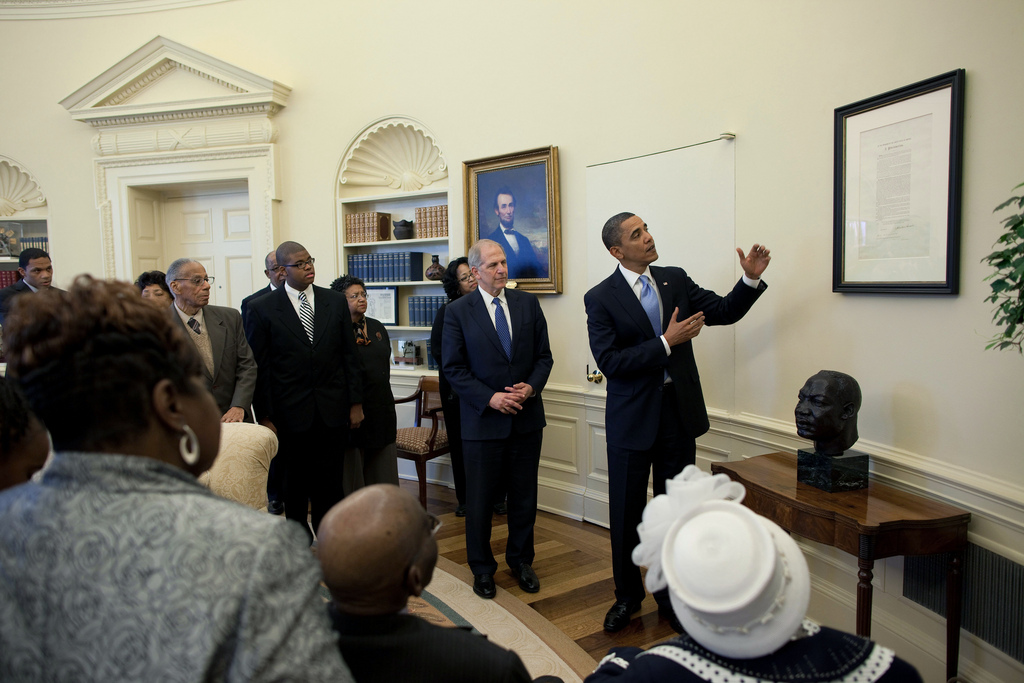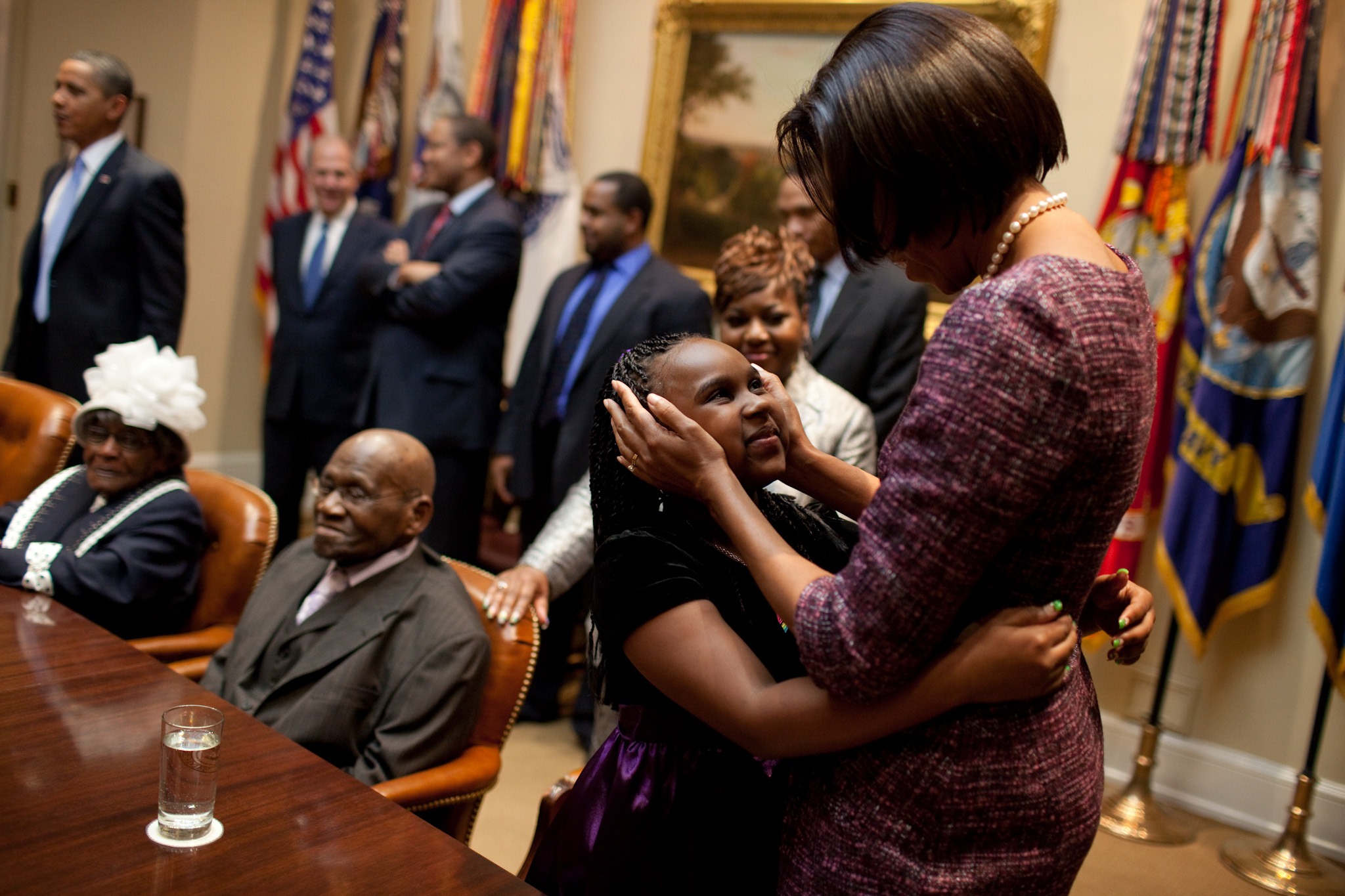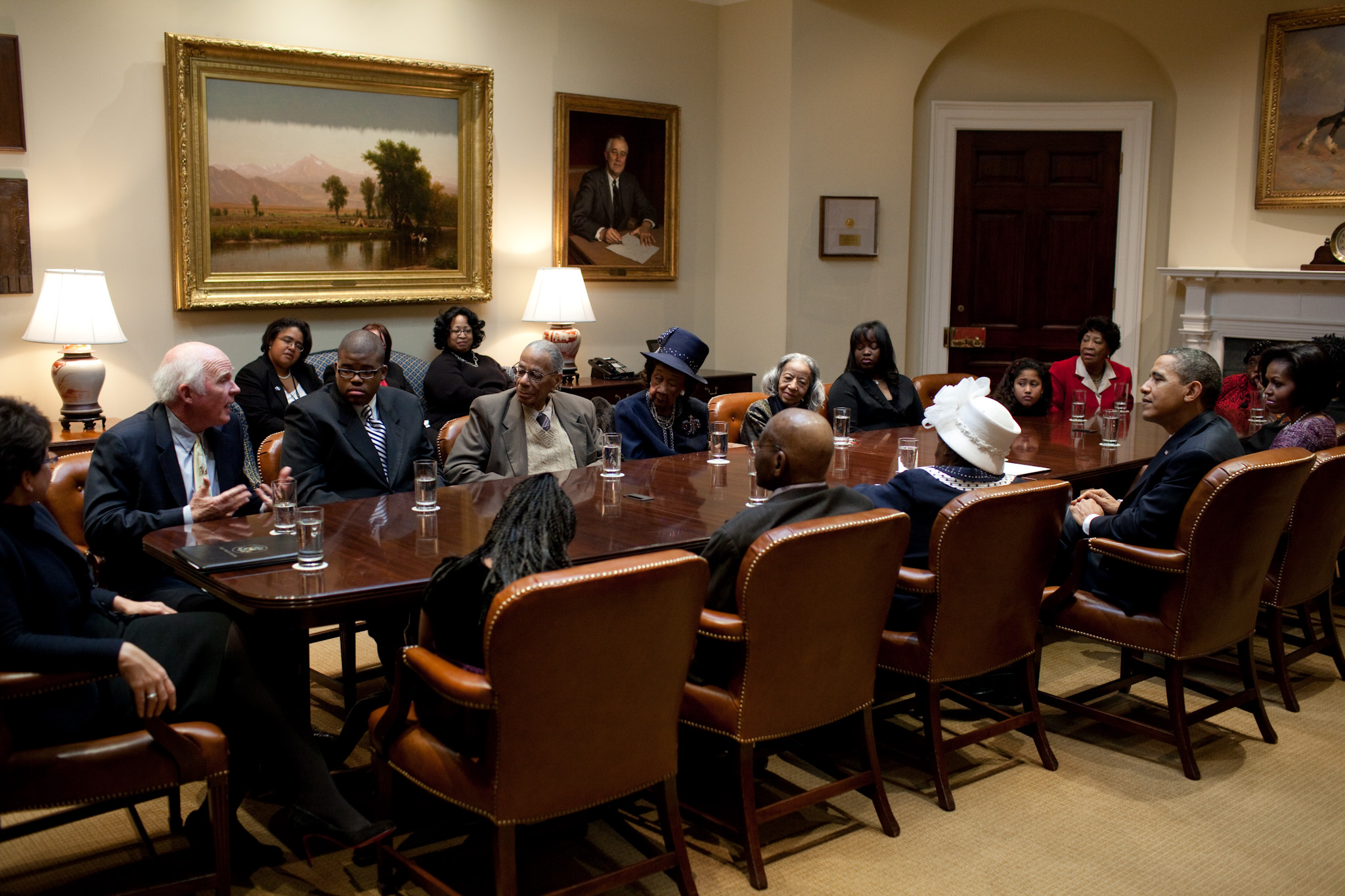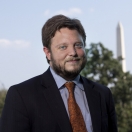
This afternoon the President took a few hours to host a conversation with a small group of African American seniors and their grandchildren on the legacy of the civil rights movement in the Roosevelt Room of the White House. They all took a moment to look over the Emancipation Proclamation, which was hung in the Oval Office over a bust of Dr. Martin Luther King.
The President gave a few brief remarks afterward:
THE PRESIDENT: Hello, everybody. We have just had a wonderful conversation. I want to just tell you a little bit about why we did this. I think sometimes in celebration of Dr. King's birthday we act as if this history was so long ago.
And the reason we brought together some elders and some young people very briefly was not just to visit the Oval Office and see the Emancipation Proclamation, which is going to be on loan to us, but it's also just to remind us that there were some extraordinarily courageous young people like Dr. Dorothy Height, like Mrs. Eleanor Banks and Romaine Thomas and her husband, and others who were actively involved in bringing about one of the great moments in United States history.
And so what we've done is we've heard some stories, shared -- Dr. Height has shared with us what it was like meeting Martin Luther King when he was a 15-year-old at Morehouse, visiting there. We heard from Ms. Glanton, Willie Glanton, who is a great activist in Iowa, about the work that she's done there on behalf of the civil rights movement, reminding us that it wasn't just isolated in some areas.
I am especially proud to have the Harveys here -- Mr. Joseph Harvey and Ms. Mabel Harvey. Mr. Joseph Harvey is 105, and Ms. Mabel Harvey here is the spry young one at 102. (Laughter.) And Ms. Harvey just now was whispering in my ear, as you guys were walking in, that this must be the Lord's doing, because we've come a mighty long way. (Laughter.) That's what she said. And so that's wonderful to hear.
We've heard from some young people who were sharing in these stories and understanding that this is a living history. And I was very pleased to hear from Taylor Branch, author of one of the definitive biographies of the civil rights movement and Dr. King. He shared, I thought, a really interesting idea, which is that not only is Dr. King's birthday a time to celebrate service, to reflect and study on how we had helped to perfect our union, but that it should be a day in which each of us individually also try to stretch out of our comfort zones and try to do something for others and to reach out and learn about things that maybe we've shied away from -- because part of what the civil rights movement was all about was changing people's hearts and minds and breaking out of old customs and old habits.
That's, I think, an important lesson for all of us on this day -- are the things that we can try to do that might have seemed impossible but we know are worth doing, and can we apply those principles that we know to be true in our own lives and our society.
So I'm just so grateful that we had this opportunity to share with everybody. And I want to wish everybody around the country a day in which they reflect on the extraordinary contributions that ordinary people can make each and every day to make America the most hopeful country in the world.
Thank you very much, everybody.





